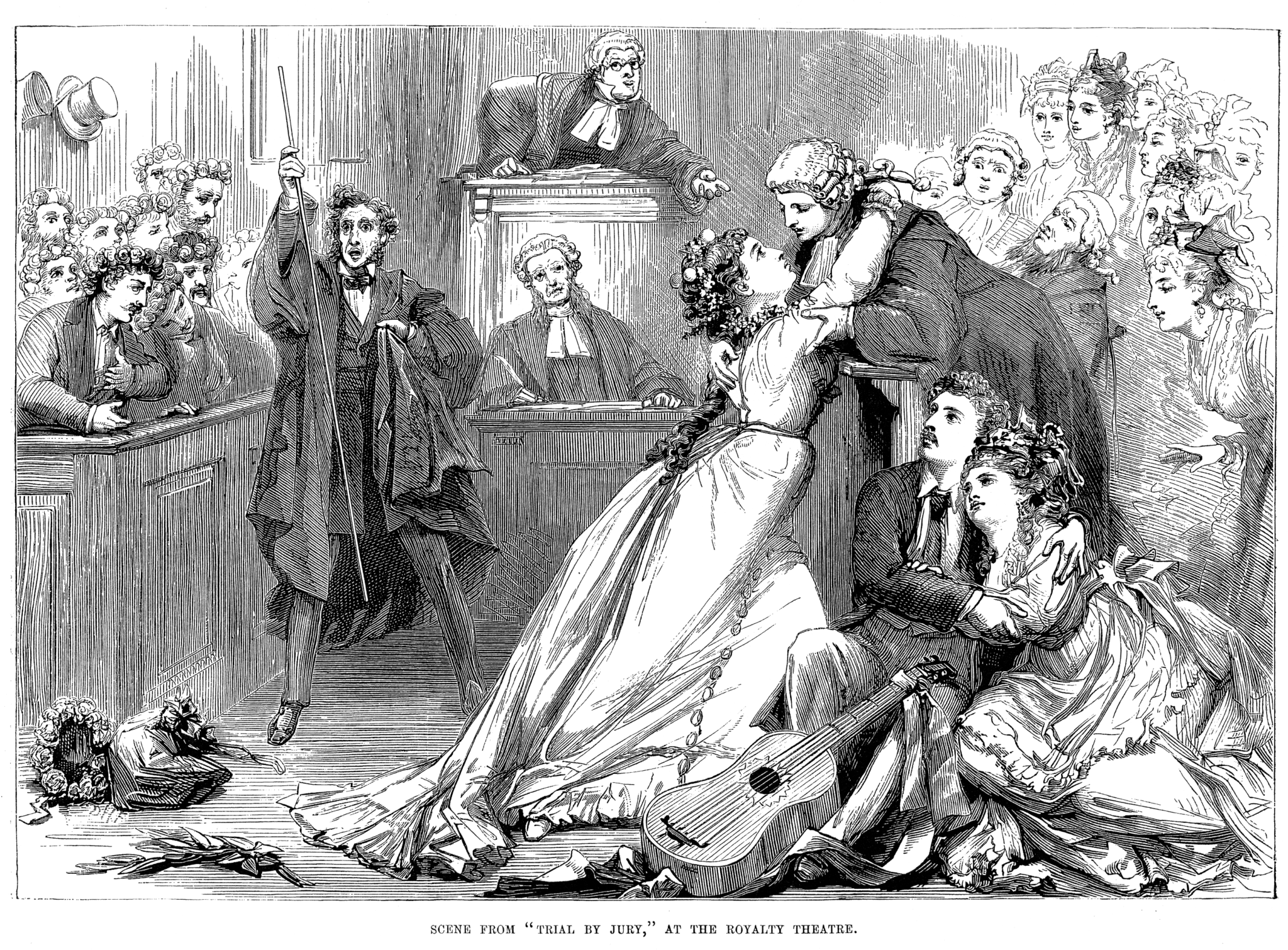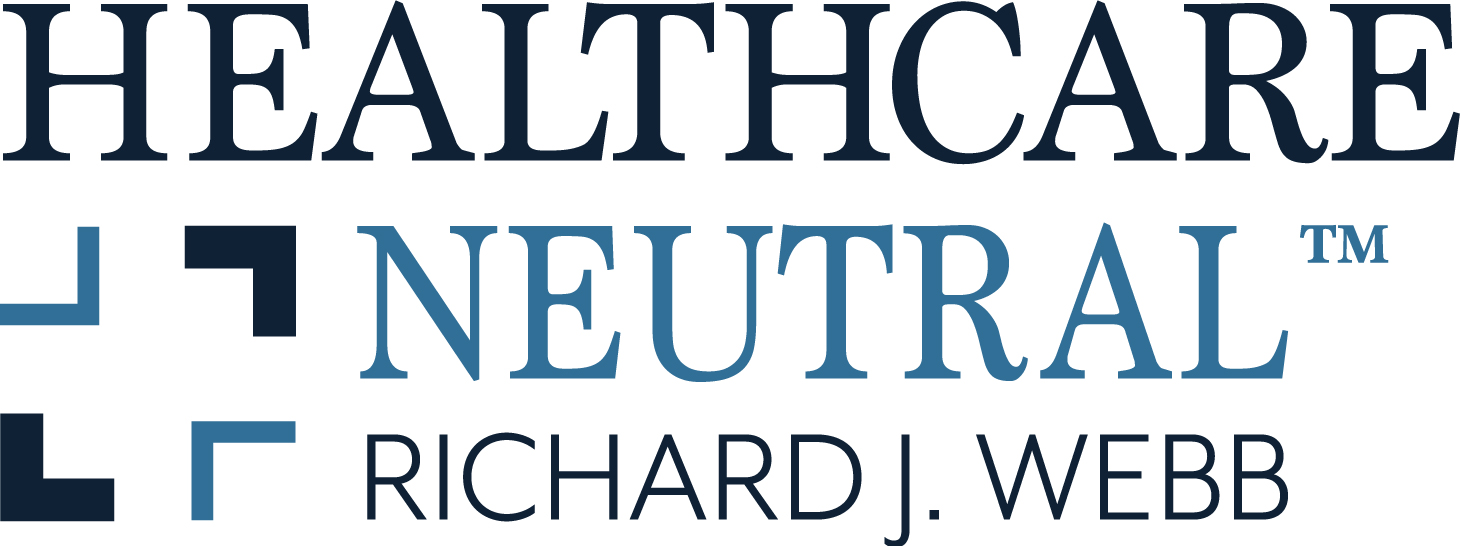
Use Mediators, Not Juries, To Resolve Medical Staff Disputes
March 10, 2008
[Image: Engraving of Gilbert and Sullivan\’s Trial by Jury, from Illustrated Sporting and Dramatic News, by D. H. Friston, May 1, 1875.]
Recently I wrote about the risk of an “intuitive decision” associated with placing the resolution of a dispute in the hands of a judge. As I was writing that post, I came across reports of a case recently decided in West Virginia that should get the attention of every hospital involved in a medical staff dispute that could end up before a jury. As mentioned in West Virginia Business Litigation by Jeffrey V. Mehalic, Hamrick v. Charleston Area Medical Center (“CAMC”) was a suit filed by a surgeon against a West Virginia hospital alleging misconduct and damage to his reputation resulting from the revocation of his medical staff privileges. The case was covered by Eric Eyre of the Charleston Gazette at the start and end of the trial.
CAMC revoked Dr. Hamrick\’s privileges when he failed to obtain a required medical malpractice insurance policy, which Dr. Hamrick insisted was not necessary as long as he maintained an adequate self-insurance fund. That issue led to separate proceedings about the adequacy of physician self-insurance under West Virginia law, in which Dr. Hamrick prevailed, and ultimately inspired state legislation permitting physicians to rely upon self-insurance. In the meantime, Dr. Hamrick pursued his suit against CAMC for damages and immediately obtained an injunction reinstating his privileges, thus permitting him to continue in practice at CAMC during the litigation.
So, notwithstanding that Dr. Hamrick had established his right to self-insure in court, that the West Virginia legislature had enacted a statute permitting self-insurance of the kind maintained by Dr. Hamrick, and that Dr. Hamrick\’s practice at CAMC was never interrupted, what did the jury do at the conclusion of the trial? They returned a $25 million verdict for Dr. Hamrick.
I know only what I read in the press about this case, but it appears some facts were brought out at trial that caused the jury to conclude that CAMC management had been less than forthright in their handling of the insurance dispute with Dr. Hamrick. Charleston attorney Scott Segal, who represented Dr. Hamrick in the case, described some of these facts in a letter to the editor of the Charleston Gazette. On the other hand, counsel for CAMC, Bob O\’Neill, told the jury that “CAMC had acted reasonably and in good faith…they bent over backward,” efforts which apparently included an offer to purchase a temporary commercial insurance plan for Dr. Hamrick until the matter was resolved.
Perhaps the best insight into the jury\’s decision comes from Karen Miller, Dr. Hamrick\’s sister and lawyer, who was quoted after the verdict in the Charleston Gazette as saying, “We need new administrators over there, and we need a new Board of Trustees. That\’s what the jury is telling the community, just like the doctor\’s [sic] have been.” Apparently there has been some dissatisfaction within the community served by CAMC in recent years concerning the performance of its leadership. But was it the job of the jury in this case to address that dissatisfaction, or to take action that would lead to a change in CAMC\’s leadership? No matter what facts came out at trial, it is difficult to see how Dr. Hamrick could have established anything more than nominal damages, let alone $5 million in compensatory damages. The $20 million punitive damages award seems to have been aimed solely at getting rid of CAMC\’s Board and management – even though the community will ultimately bear this cost. Perhaps an appeal will turn things around, but I understand that West Virgina offers no appeal of right, so the state\’s Supreme Court must first agree to take the case.
What\’s the moral of the story? Hospitals locked in a dispute with a physician that may end up being decided by a jury must take into account the uncertainty of the jury\’s reasoning process, and the certainty that the jury will not be made up of hospital administrators or health care lawyers. Even when a hospital is sure it is “in the right”, it may end up with a very bad result. My guess is the case didn\’t settle because CAMC believed (1) that it was “right,” and (2) that Dr. Hamrick\’s last settlement demand was higher than CAMC\’s risk of a bad jury verdict. Whether CAMC was “right” or “wrong” didn\’t matter. Getting hospitals to understand this, and helping them to correctly assess the competing risks, are the mediator\’s bread and butter.
